In the spring of 2019, the New York Rangers’ rebuilding project looked to be progressing perfectly.
It had been more than a year since the February 2018 “Letter” in which team brass announced the club’s intention to embark on a teardown and reconstruction project, acknowledging that the core that carried the team to three Eastern Conference Finals and one Stanley Cup Final without capturing a championship had gone as far as it could go. Since formally declaring the new course of action and asking fans for patience, the Rangers had honored that mission up to that point.
Then-general manager Jeff Gorton had pulled off two major deadline trades in 2018, one with the Tampa Bay Lightning that ended up being a bust, and one with the Boston Bruins that delivered big results. The front office was excited by the three first-round picks it had made that year, thanks to the aforementioned trades that had each returned a first-rounder. Even better, the Blueshirts had captured the No. 2 spot in the 2019 NHL Draft when the lottery was conducted in early April of that year.
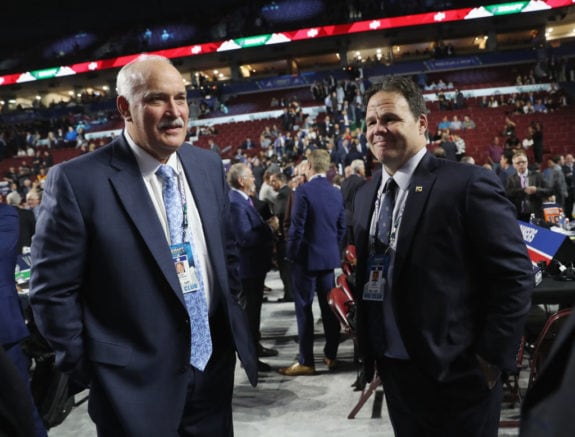
Later that month, Gorton pulled off what turned out to be a lopsided deal with the Carolina Hurricanes for the rights to promising young defenseman Adam Fox, who had made clear that he was only interested in signing with the Rangers, the team he had grown up rooting for on Long Island.
With its youthful talent base growing through the methodical approach the organization had promised to follow, the Rangers eyed a 2019 offseason that guaranteed them one of the two consensus top prospects in the draft, and they also held a pair of second-round selections to further stock the organizational cupboard. Everything appeared to be on track, pleasing a fan base that watched with anticipation as their team looked to be constructing an outfit capable of delivering the kind of sustained contention that the previous core of players had for a decade.
The summer of 2019 also brought another major personnel score, this one via free agency. Yet while no one viewed that signing at the time as the beginning of the Rangers’ rebuild moving in a different direction, that is indeed what transpired beginning four summers ago – a chain of events that has left the Blueshirts in the uncertain situation they find themselves today.
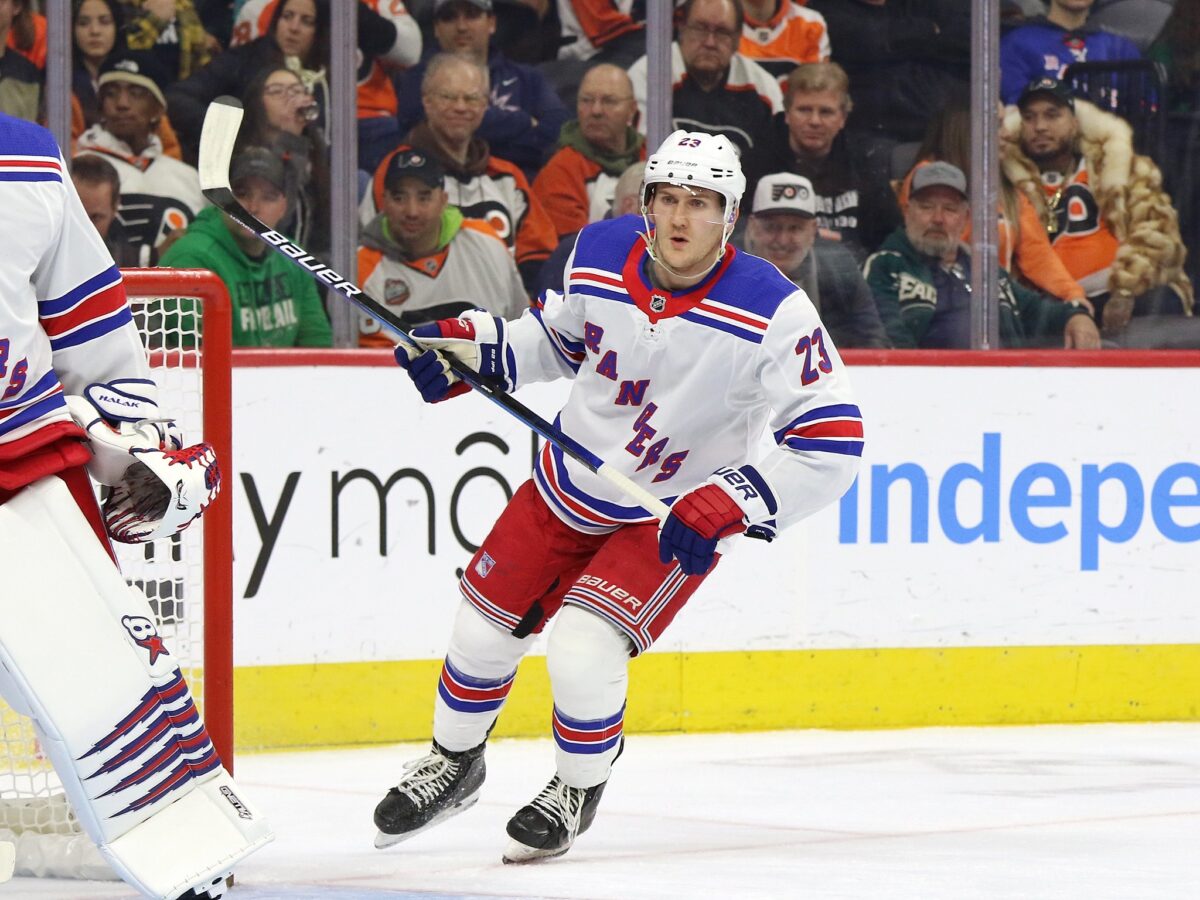
Without further ado, let’s examine four key reasons why the Rangers’ promising start to their reconstruction started to come apart pretty quickly after it began.
1. Rangers Sign Artemi Panarin to 7-Year Contract, July 1, 2019
The Rangers won the sweepstakes for star forward Artemi Panarin, who was lured by the bright lights of Broadway and some invaluable recruiting from then-team president John Davidson – who held the same position with the Columbus Blue Jackets during Panarin’s two seasons there. Signing a seven-year, $81.5 million contract, Panarin accepted the Rangers’ offer over ones from the Blue Jackets and archrival New York Islanders.
The Rangers envisioned Panarin as both a bridge to the better future they were working toward, a player who could take the pressure off developing high-end kids to produce right away while they grew, as well as a centerpiece of their offense once they arrived. His $11.6 million annual salary-cap hit, at the time second in the league behind only Connor McDavid’s $12.5 million – and now the third-highest – was seen as a price worth paying for adding such a dynamic player to the lineup.
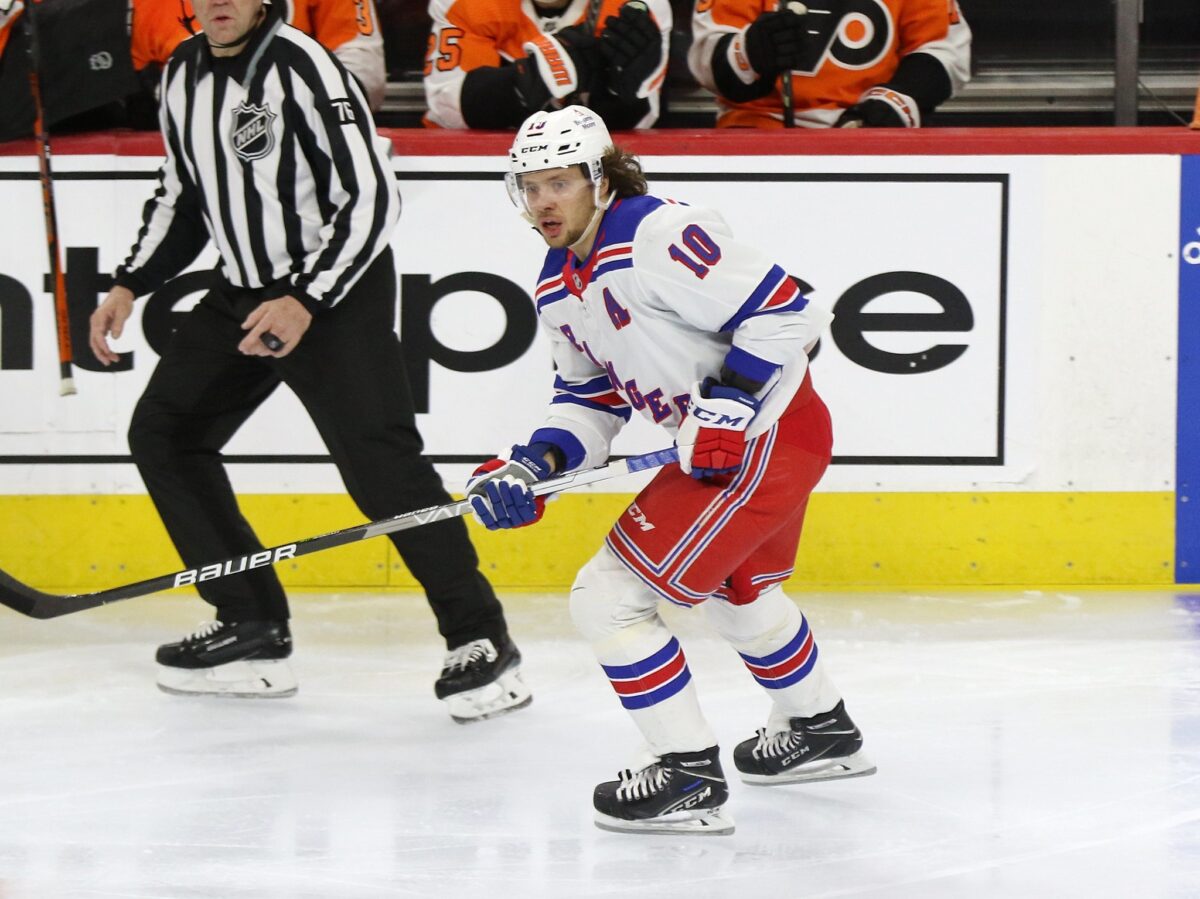
Panarin has hardly failed to live up to the Rangers’ expectations, and then some. Apparently invigorated by playing on the big stage, he’s piled up 341 points in 268 games in a Blueshirt, with 90-plus point seasons in the three mostly full seasons he’s played with the Rangers (the COVID-19 pandemic altering the lengths of the 2019-20 and 2020-21 seasons). There’s little question that he’s not just the best free-agent signing in franchise history; he’s among the best such acquisitions in New York sports history.
Why It Can Be Second-Guessed:
As great as Panarin has been for the Rangers during the regular season, he’s largely failed to produce in the playoffs. Though he scored the series-winning goal in overtime of Game 7 against the Penguins in first round of the 2022 postseason, Panarin hasn’t been the same unstoppable offensive force in three playoffs with the Rangers, totaling 20 points and a hard-to-believe minus-10 rating in 30 games. He was held to two assists in the club’s excruciating seven-game loss to the New Jersey Devils in the first round this year.

Furthermore, Panarin’s massive cap hit has caught up to a Rangers front office that’s struggling to re-sign the wave of young players who came to the team amidst the rebuild to second contracts. With only about $11 million in space going into this offseason – a tightness exacerbated by the flat caps surrounding the pandemic seasons – Panarin’s contract is hardly the only unwieldly one on the Blueshirts payroll; it’s just the biggest. With three seasons left to run on a buyout-proof pact, current general manager Chris Drury has little choice but to operate around Panarin’s giant average annual value as he tries to keep his talented young defense and key young forwards Alexis Lafreniere and Kaapo Kakko around.
2. Rangers Sign Chris Kreider to 7-Year Extension, Feb. 24, 2020
With the organization heading into its second straight trade deadline season since the official start of its rebuild, Gorton engaged in a cat-and-mouse game with power forward Chris Kreider, the team’s 2009 first-round pick who was set to become an unrestricted free agent that summer. Speculation swirled that Kreider was a goner, sure to be traded to a Stanley Cup contender before the trade deadline.
Ultimately, though, the Rangers weren’t willing to do away with Kreider’s rare combination of size and power. With Kreider compromising by taking an AAV of $6.5 million, lower than he would have received on the open market that summer, and the Rangers going to seven years – longer than they would have liked – the deal got done hours before the deadline. Along with Panarin, the front office saw Kreider as a good soldier who could not only produce through the rebuild, but someone whose character, work ethic and leadership would prove invaluable to the next generation of Rangers.
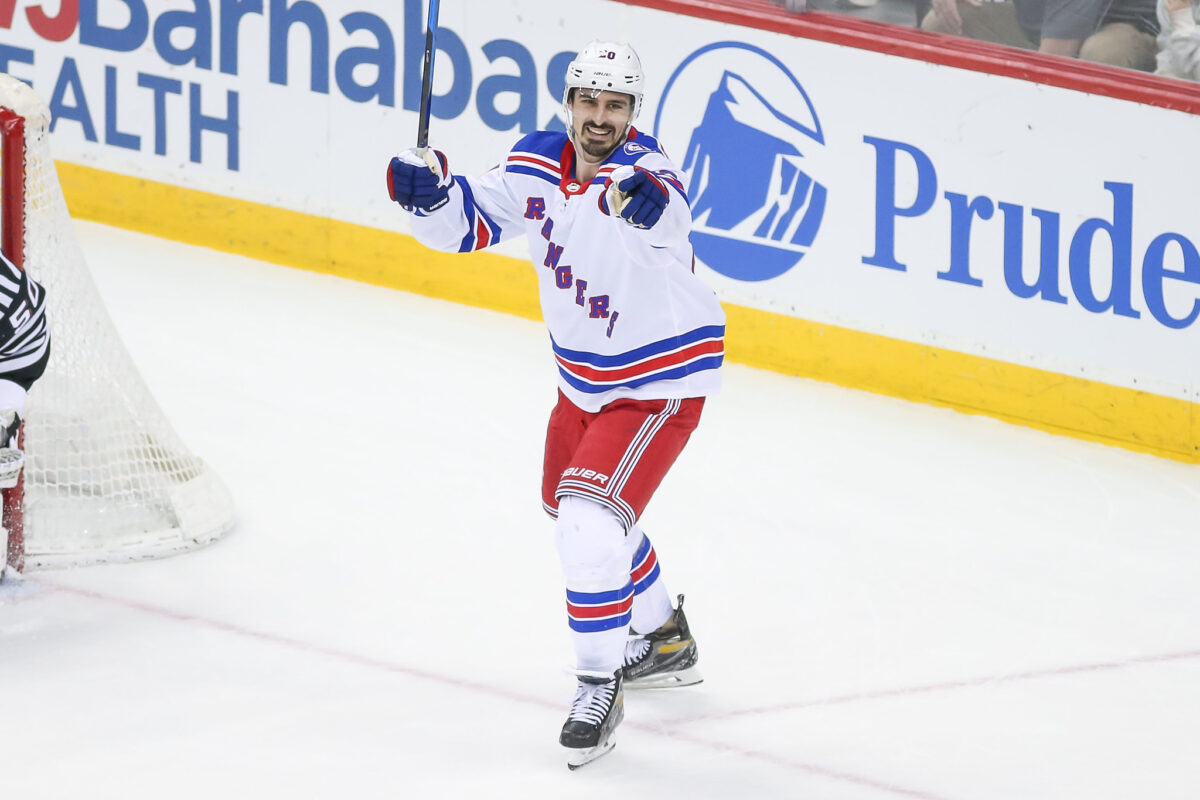
It’s difficult to argue that the Blueshirts haven’t gotten their money’s worth out of Kreider to this point. Despite his reputation for streakiness and the perception that Kreider had never been able to fully tap his considerable potential, the 31-year-old has found a different gear since re-upping. After an uneven 2020-21 post-pandemic season, Kreider stunned the NHL with a career-best 52-goal campaign in 2021-22 – a total 24 better than his previous high – and followed it up with 36 goals last season, seemingly fulfilling the long-held belief that he was an elite scorer-in-waiting. One of the NHL’s best net-front presences, Kreider remains a cornerstone of the club’s offense.
Why It Can Be Second-Guessed:
While Panarin and Kreider give the Rangers a pair of star top-six left wings, their long-term commitments have, fairly or unfairly, created imbalance on the roster and throughout the organization. Most notably, Lafreniere, the top overall pick in the 2020 draft, is blocked from meaningful minutes at his natural position, with no clear path to a top-six role.
The Rangers won the rights to select Lafreniere, the consensus top prospect that year, months after the Rangers chose to re-sign Kreider, a circumstance that was obviously unforeseeable to the organization at the time. Lafreniere, though, isn’t the only young left wing in the organization that finds his way to Broadway obstructed by the two big-money veterans who aren’t going anywhere. The club has high hopes for 2021 first-round pick Brennan Othmann. Ditto for promising forward prospect Will Cuylle, whose size and strength are exactly what the Rangers need more of up front.
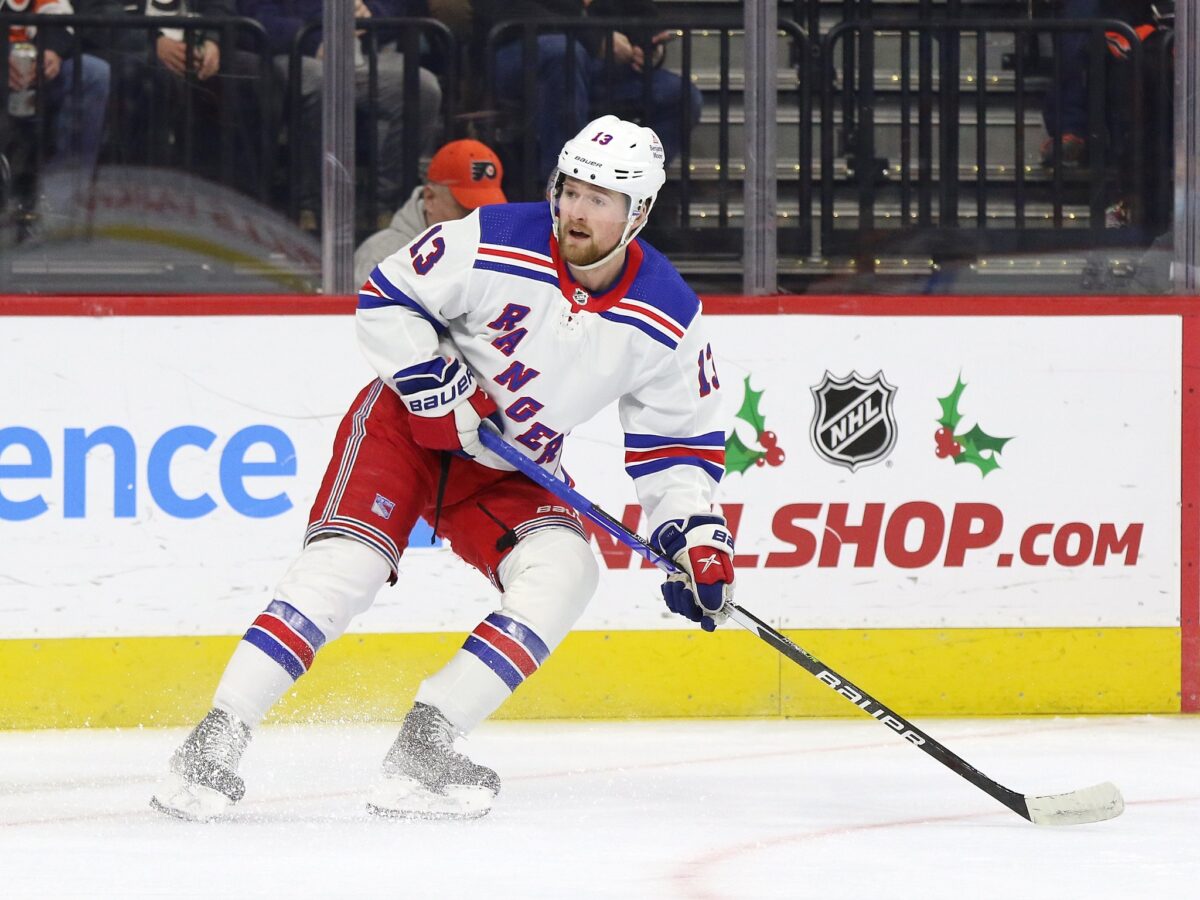
The only option at this point for a team desperate for cheap, productive forward talent is to see if any of those players can transition to the right side – though the Rangers have already tried that with Lafreniere, to mixed results. The club’s options here are extremely limited, as Lafreniere and Othmann are seen as future top-sixers. Cuylle’s ceiling might be as a bottom-six player, but the glut of personnel and extremely limited opportunities on the left side means his hopes of making the team next season probably aren’t great.
The hard talent tilt to port, which coincides with a dearth of candidates at right wing, can be traced to another questionable milestone of the rebuild …
3. Rangers Trade Pavel Buchnevich to St. Louis Blues, July 23, 2021
Pavel Buchnevich was already on the roster and his development ongoing when The Letter went out, looking like a soon-to-be core player for the Rangers into the foreseeable future. Rewarding the front office’s patience with his personal and on-ice development, Buchnevich busted out in the pandemic-shortened 2020-21 season, totaling 20 goals and 28 assists while emerging as an outstanding two-way player. At age 25, he became a restricted free agent after that season, a rare success story in the Rangers’ checkered history of player development.
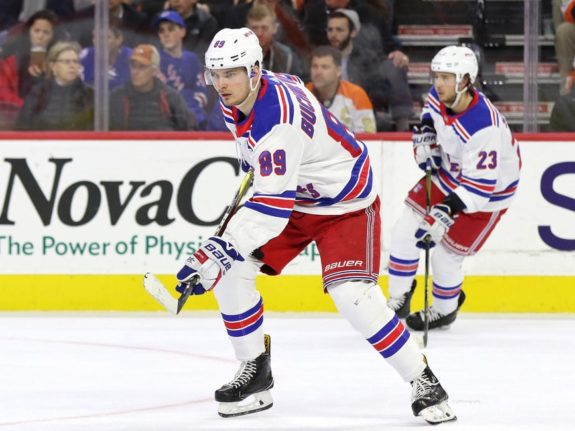
However, Drury, going into his first full season as GM, saw a significant cap crunch coming in the next few seasons. His solution was to trade Buchnevich’s rights to the Blues for forward Sammy Blais and a second-round pick.
Why It Can Be Second-Guessed:
Along with the fact that Buchnevich has blossomed into a point-per-game star in St. Louis, with 143 in 136 games over two seasons in the Gateway City, this highly-questionable swap has left the Rangers devoid of long-term solutions at his position ever since. Drury had to cover over Buchnevich’s departure by dealing away future assets at the past two trade deadlines just to fill the top-six holes on the right side: He brought in Andrew Copp and Frank Vatrano in 2022, Vladimir Tarasenko and Patrick Kane in 2023. All were unrestricted free agents when acquired, and with Tarasenko and Kane expected to leave as well, the Rangers will head into the 2023-24 season with the same yawning chasm at right wing.
It certainly didn’t help the Blueshirts missing badly in the 2018 draft with ninth overall pick Vitali Kravtsov, the talented but mercurial Russian right wing who failed to adjust to the NHL and North America in general, was traded to the Vancouver Canucks and then returned home, perhaps never to return.
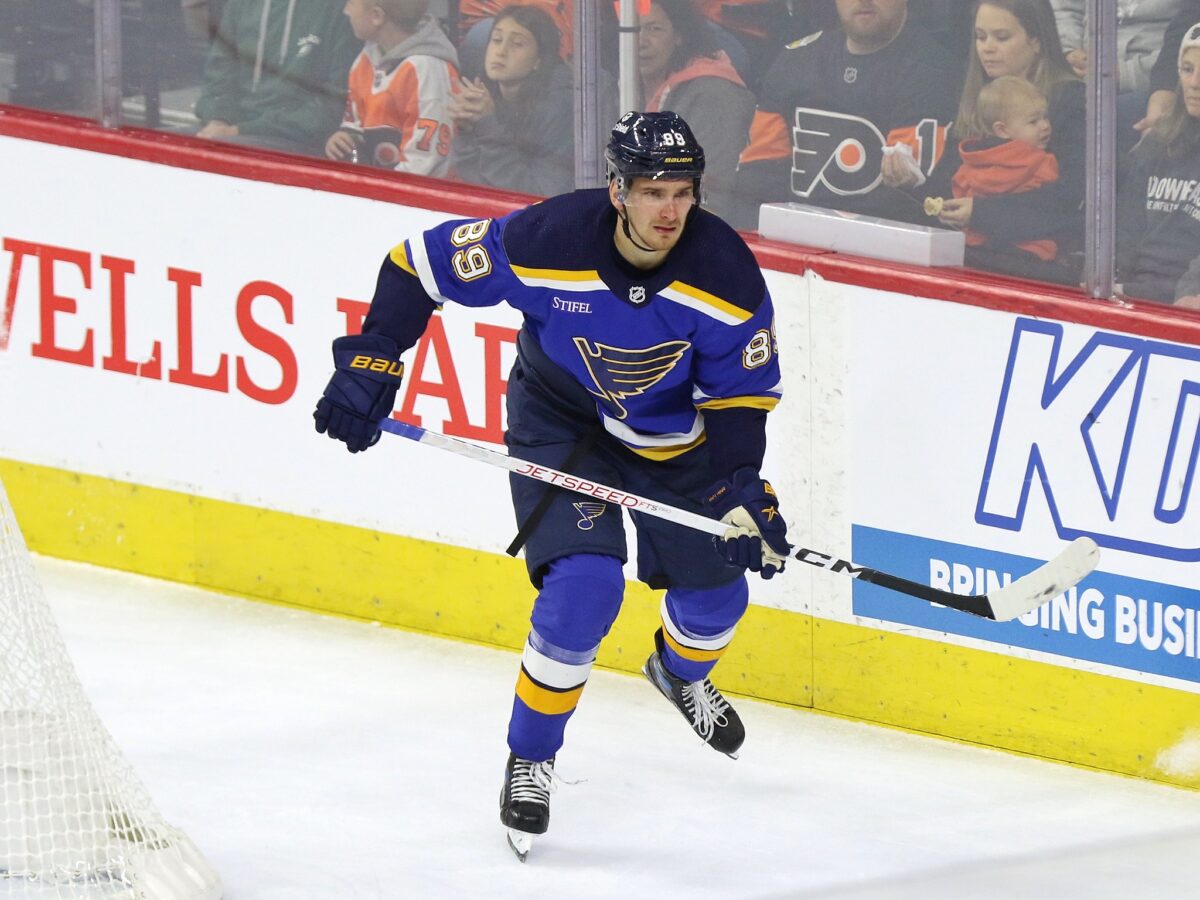
Buchnevich inked a four-year contract with the Blues that carries a $5.8 million cap hit – a bargain, as it turned out. Had Drury avoided this trade, it might have allowed him to avert yet another free-agent signing that’s hampered the reconstruction project …
4. Rangers Sign Vincent Trocheck to 7-Year Contract, July 13, 2022
The Blueshirts seemed to jump at the opportunity to add center Vincent Trocheck on the first day of free agency last year, committing to him for seven years and $39 million. Trocheck’s scoring, speed, physicality and nasty edge were on display as his Carolina Hurricanes fell in seven games in the second round of the playoffs to the Rangers that spring. Trocheck, who had played for then-Rangers coach Gerard Gallant with the Florida Panthers several years earlier, possessed the jagged, versatile game that the Blueshirts lacked among their top two forward units.
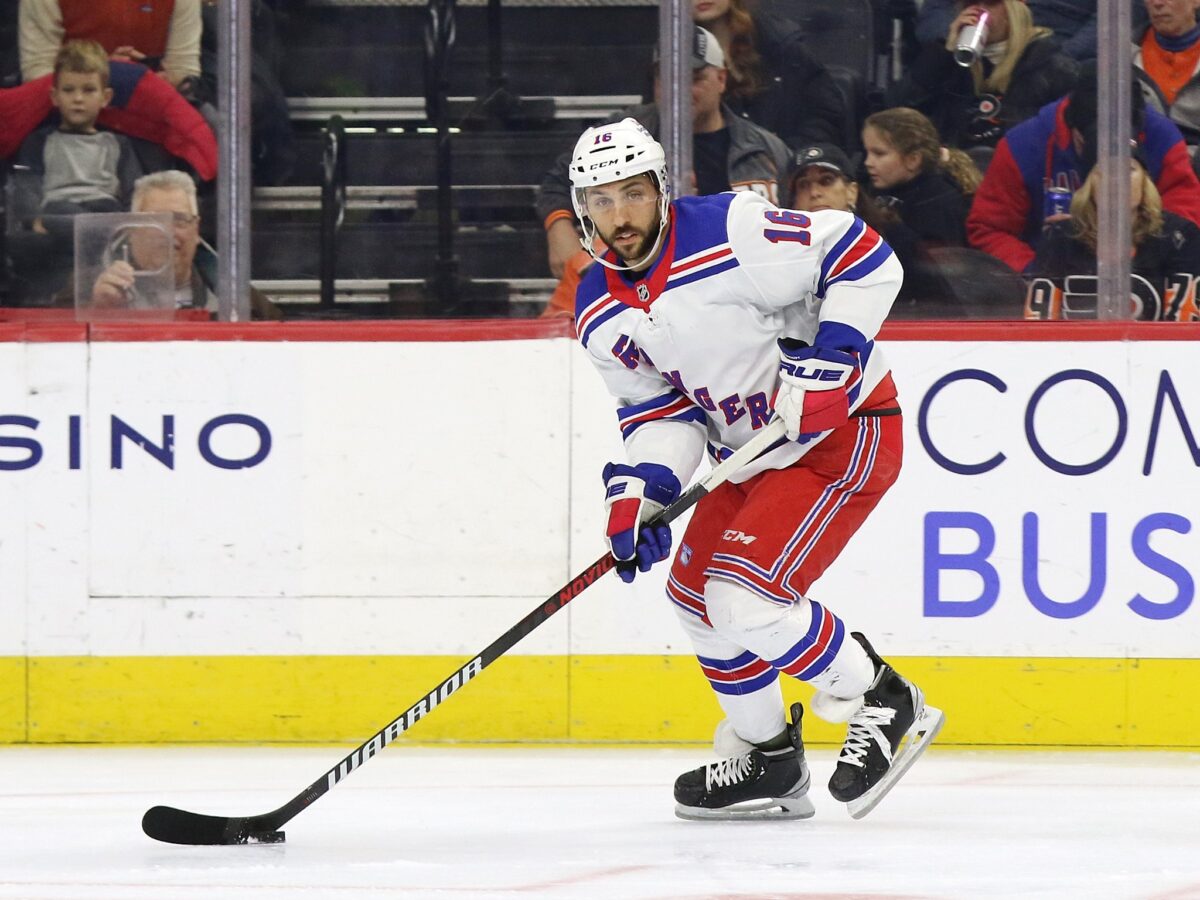
Despite some early issues adjusting to his new team, Trocheck put up 22 goals and 42 assists in 2022-23 in a strong first season on Broadway.
Why It Can Be Second-Guessed:
Trocheck will play next season at age 30, and with six years remaining on his deal, represents yet another expensive veteran contract that seems unlikely to age well – while adding to the current salary squeeze faced by Drury and the front office. The decision to obtain Trocheck to be their long-term second-line center looks infinitely worse now due to the fact that the Rangers might have had the solution already in-house.
The club has shown Buchnevich-like patience with Filip Chytil, the talented and affable 21st overall pick in 2017. The Rangers stuck with the big center through five seasons of growing pains and watched him finally emerge last season, when he put up career highs of 22 goals and 23 assists while exhibiting a newfound confidence and maturity.
At age 23, Chytil might be capable of manning the middle on the second line after inking a four-year, $17.75 million extension March 29. The problem is that the Rangers, apparently unwilling to risk Chytil not being ready for the role last season despite his 2022 playoff breakout, had already signed Trocheck.
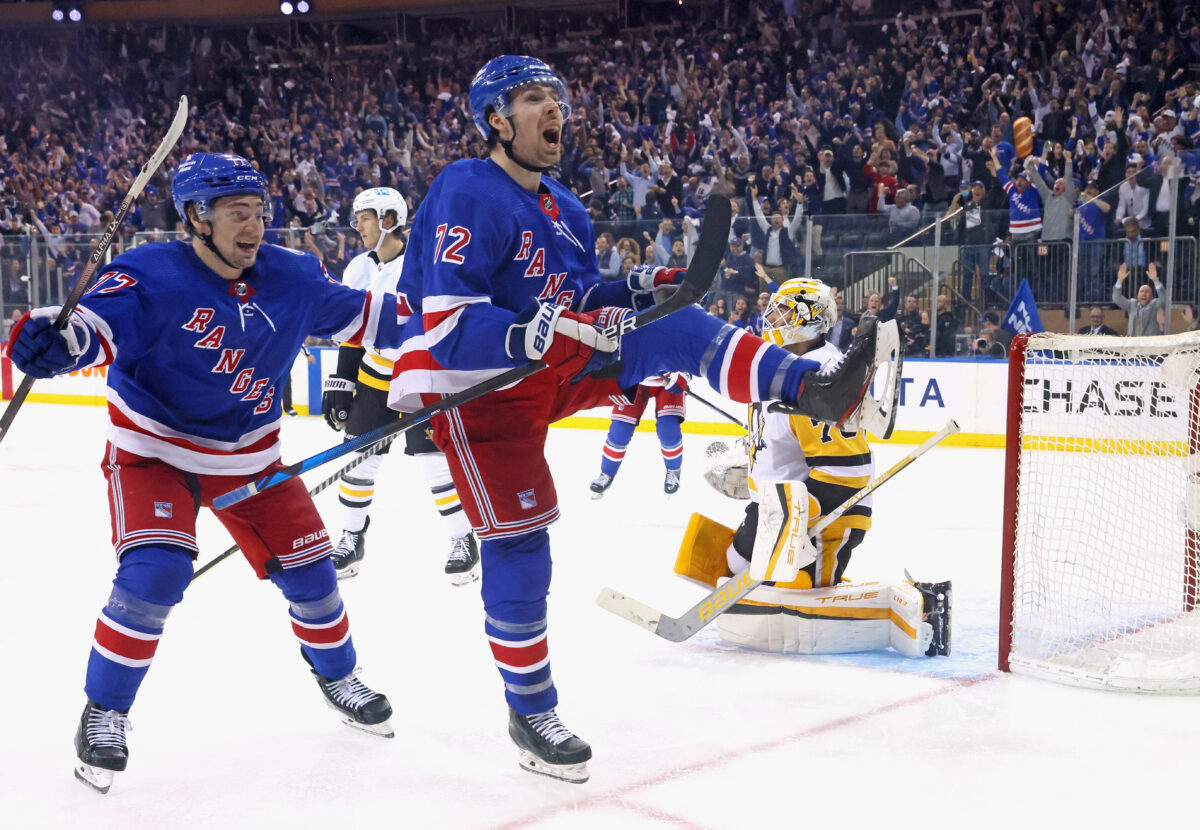
That’s left another positional logjam on the roster, in this case center. Trocheck is an effective player, but do the Rangers see Chytil as no more than their third-line pivot throughout the life of his contract? If he eventually surpasses Trocheck for the second-line spot, does that leave the Blueshirts with a highly-paid veteran third-liner who is ill-suited to the role?
The Rangers have long needed to construct a third forward unit that can check and match up with opponents’ top lines. Having both Chytil and Trocheck makes that difficult, with perhaps a likelihood that the club will go into next season with a third scoring line once again – the type of overkill that has led to a lack of balance and defined roles in the lineup for years.
Related: Rangers Must Prioritize Right Wing at the NHL Entry Draft
Had the Rangers trusted Chytil to grow into the 2C role on the heels of his outstanding 2022 playoff performance and passed on Trocheck in free agency, they’d have some financial flexibility to address right wing – it’s painful to point out that Trocheck’s $5.625 million cap hit essentially matches Buchnevich’s – in addition to being able re-sign their group of young players that are due second contracts over the next few seasons.
A Look Across the Hudson Provides a Study in Contrasts
The Blueshirts’ crushing cap picture is hardly due primarily to the Trocheck signing, of course. It would have been very difficult to find any Rangers fan who wasn’t thrilled about adding Panarin at the time, regardless of cap hit, and Kreider’s AAV has been a bargain for a player who’s delivered 88 goals in the past two seasons.
In hindsight, though, it’s fair to wonder whether team brass became impatient after missing the playoffs in 2017-18 and 2018-19, the first time the Rangers had done so in back-to-back years since their seven-year drought from 1997-04. Likewise, it’s worth pondering whether the club’s surprise run to the Eastern Conference Final in 2022 might have done more harm than good for the long-term outlook of the franchise. The Blueshirts started handing out big contracts again less than a year and half into their rebuild, which continued up until last offseason. They’re now an expensive, veteran-heavy, imbalanced team with little financial wiggle room to re-up their youthful success stories, let alone make badly-needed improvements.
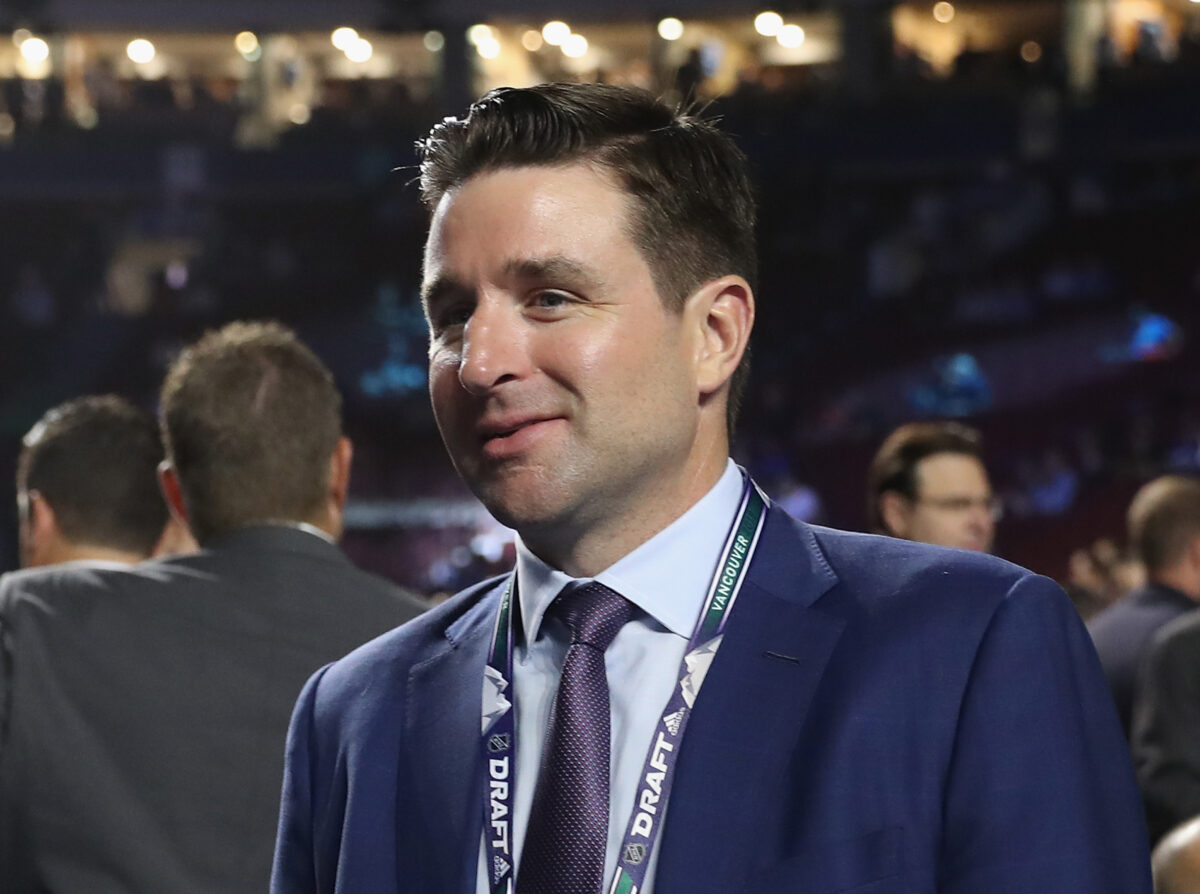
Though it’s a sensitive subject for Rangers fans, it’s difficult not to look just to the west with some envy over how the area-rival Devils approached their roster-building efforts during the same period.
It’s important to note that the Devils have been mostly a train wreck since making the Stanley Cup Final in 2012, missing the playoffs in nine of 11 seasons since. Furthermore, New Jersey beat out the Rangers for the top spot in the 2019 draft, bringing them rising star Jack Hughes instead of Kakko, the young right wing who’s improving but still finding his way for the Blueshirts.
Nonetheless, the Devils never wavered from their vision, allowing Hughes, Jesper Bratt, Nico Hischier, Dawson Mercer and the like to gain extensive NHL experience in big spots, living with their failures and growth while refusing to jump the gun and bring in expensive veterans to speed the process along. The result: A 112-point season (and playoff win over the Rangers), high-end youth that benefited greatly from a steady development process, and an excellent cap situation that has allowed New Jersey to sign those young cornerstones to long-term deals that will carry them into their primes.
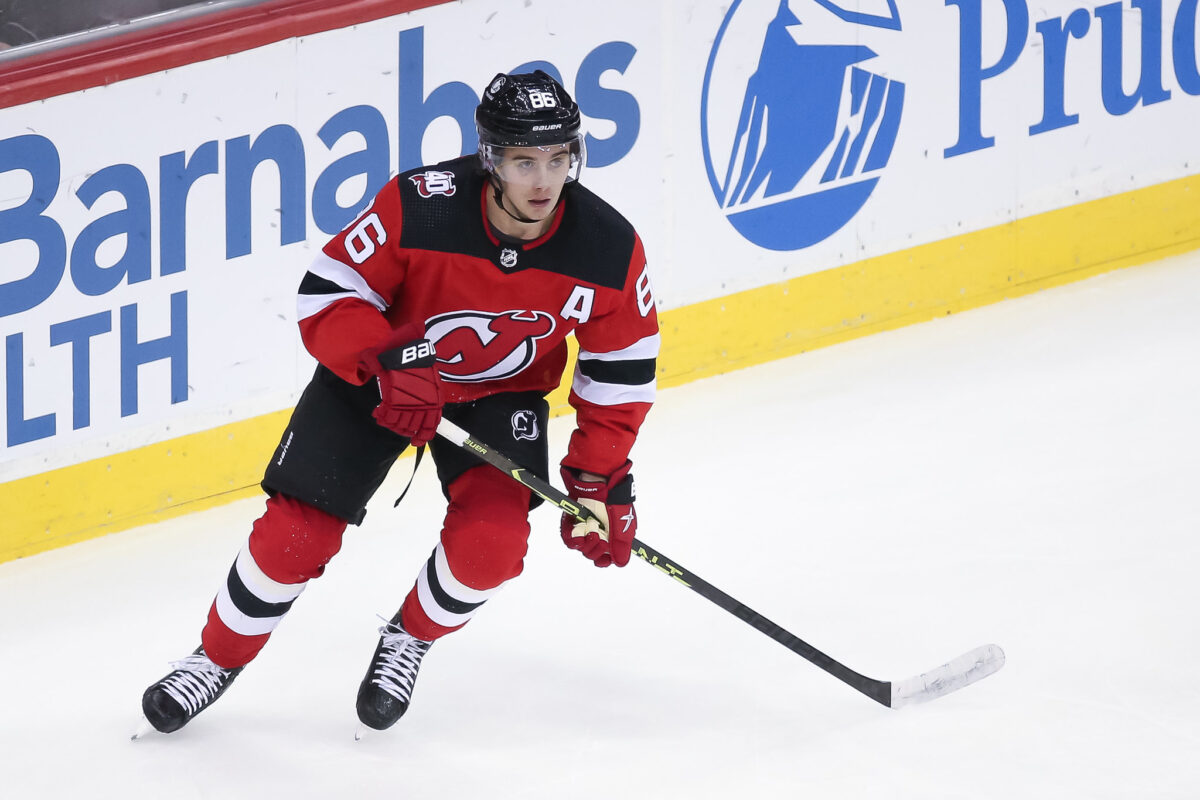
Five years after seemingly embracing a similar vision, a decision that sprang from an organizational awareness that a course correction was needed, the Rangers’ path forward seems murky again. Time will tell whether their route back to contention proves to have been the right one.
